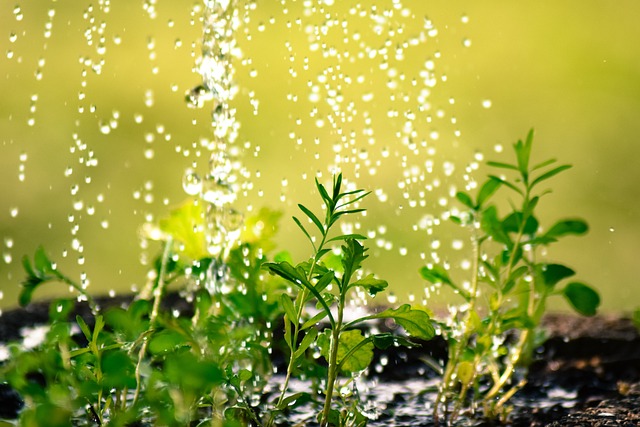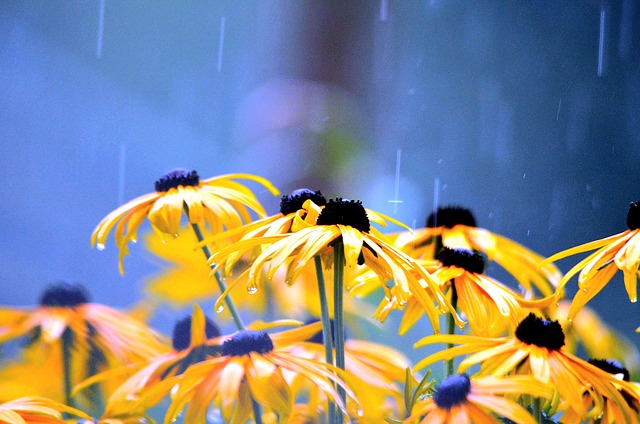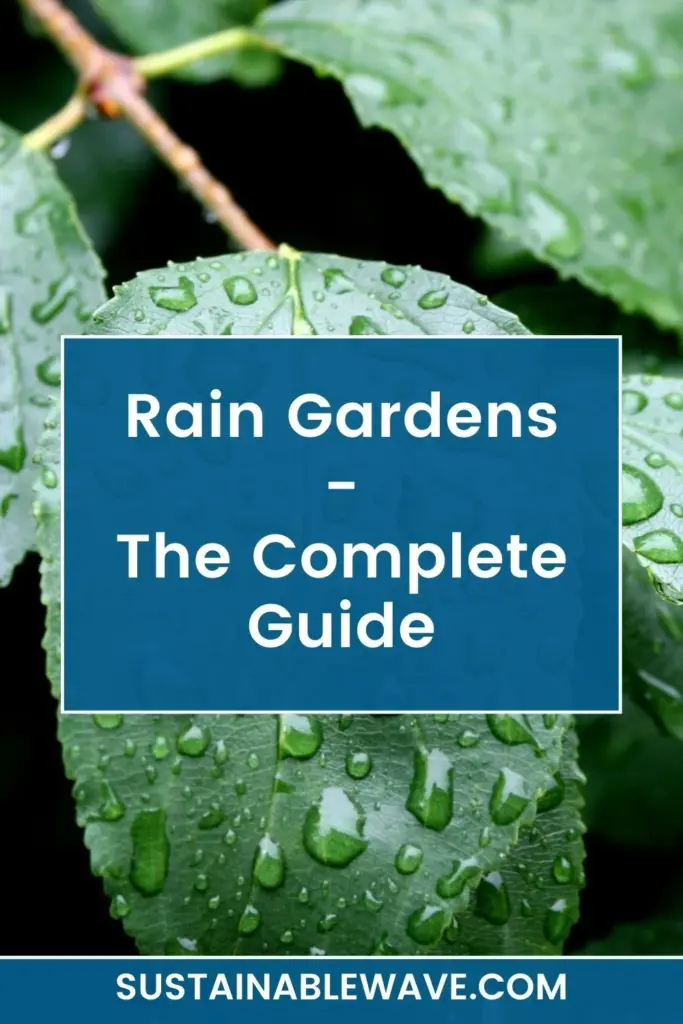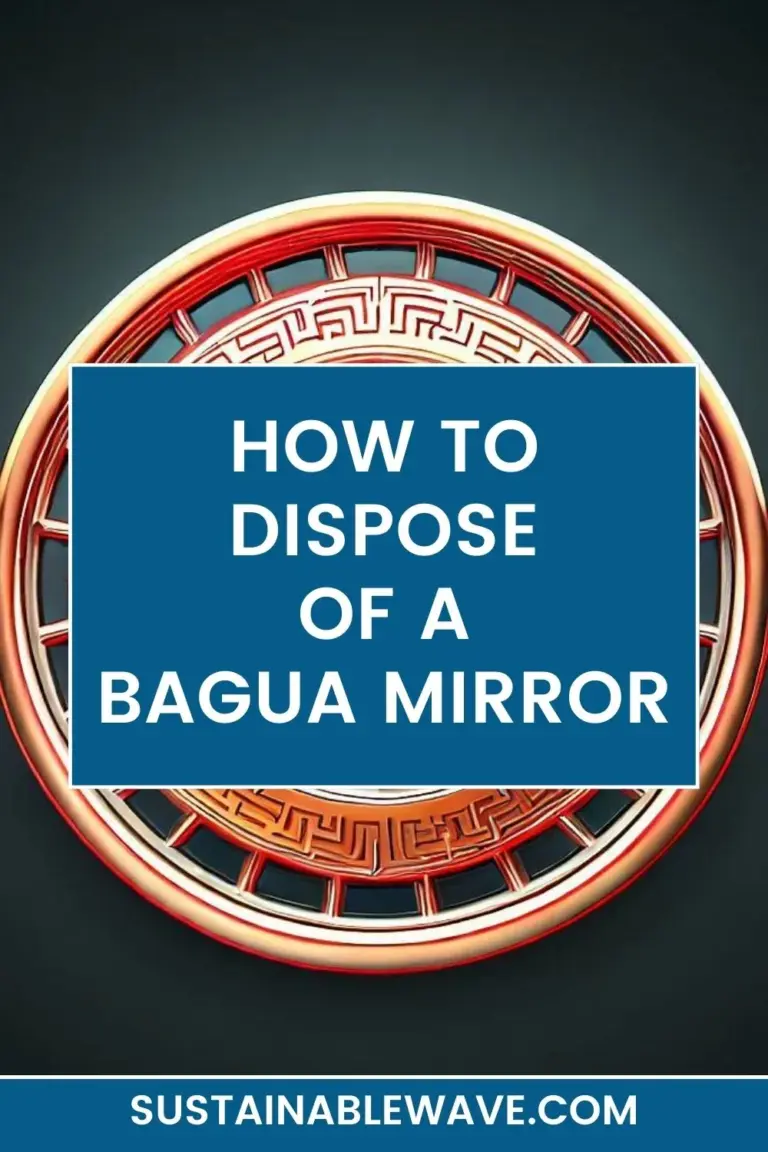Dive into the fascinating world of rain gardens with our comprehensive guide.
Discover how these eco-friendly landscaping features can beautify your home, conserve water, and protect our environment.
Whether you’re a gardening novice or a seasoned green thumb, this guide is your key to unlocking the potential of rain gardens.
Understanding Rain Gardens

What is a Rain Garden?
A rain garden, in essence, is a plant-filled shallow depression that collects rainwater runoff from rooftops, driveways, and other hard surfaces.
It’s designed to absorb and filter rainwater, allowing it to percolate into the ground naturally, reducing the amount of stormwater runoff that ends up in our streams and rivers.
The History of Rain Gardens
Rain gardens are not a modern concept. Ancient civilizations in the Middle East and South America created similar structures to capture and utilize rainwater in arid regions.
Fast forward to the 21st century, rain gardens are now recognized as a sustainable landscaping practice and are becoming increasingly popular in urban and suburban areas.
Importance of Rain Gardens
Rain gardens are an effective tool in managing stormwater runoff, preventing soil erosion, and improving water quality. They also provide valuable habitats for birds, butterflies, and beneficial insects.
Moreover, rain gardens beautify your landscape, increase property values, and contribute to community resilience against climate change impacts.
Designing a Rain Garden
Choosing the Right Location
Choosing the right location for a rain garden is crucial. It should be at least 10 feet away from your home to prevent water damage and ideally located in a naturally low-lying area of your yard.
The location should also receive plenty of sunlight to support plant growth.
Calculating the Right Size
The size of your rain garden will depend on the size of the surface area that’s providing the runoff (like your roof), the type of soil in your yard, and the rainfall in your region.
An experienced landscaper or a rain garden calculator can help you determine the appropriate size.
Selecting Suitable Plants
Choose native plants for your rain garden, as they’re adapted to local weather conditions and soil types. They’re also more resistant to local pests and diseases.
Consider a mix of deep-rooted perennials, shrubs, and grasses to create layers and enhance the aesthetic appeal of your garden.
Constructing a Rain Garden
Pre-Construction Considerations
Before you start digging, call your local utility company to mark out any underground utilities.
Also, ensure that your rain garden design complies with local ordinances and neighborhood association rules.
Rain Garden Construction Process
The construction process involves excavation, soil preparation, planting, and mulching. It’s not overly complicated, but it requires some physical labor.
If DIY isn’t your thing, you can hire a professional landscaping company to construct your rain garden.
Post-Construction Measures
Once your rain garden is in place, you’ll need to water the plants until they’re established. Consider installing a temporary border around your rain garden to protect it from foot traffic.
Lastly, observe how your garden behaves during a rainfall event to see if any adjustments are needed.
Maintaining a Rain Garden
Watering the Rain Garden
Contrary to popular belief, rain gardens require some watering, especially in the first two years after planting, to ensure the plants become well-established.
After this initial period, the plants, if native and well-selected, should survive solely on rainwater. However, during particularly dry spells, supplemental watering may be necessary to keep your garden thriving.
Managing Weeds and Pests
In a well-maintained rain garden, native plants and beneficial insects will usually keep weeds and pests under control. Still, some manual weeding may be needed, especially in the early stages.
Remember, the use of pesticides should be minimal or avoided entirely to preserve the garden’s ecological balance.
Seasonal Maintenance Tasks
Seasonal tasks include pruning in early spring, removing dead plant materials, and adding mulch as needed. Monitoring plant health and replacing any plants that are not thriving is also crucial.
In the fall, consider collecting seeds from your garden plants to sow in the next spring.
Troubleshooting a Rain Garden

Common Rain Garden Issues
Common issues may include standing water for more than 48 hours, erosion of the garden or the surrounding area, and invasive plants outcompeting native ones.
Poor plant growth or die-off might indicate issues with soil composition, sunlight, or incompatible plant species.
Solutions to Rain Garden Problems
To address standing water issues, consider improving your garden’s soil by adding compost or other organic matter to increase its permeability.
If erosion is a problem, installing a rock bed or other physical barrier at the inlet can slow down incoming water. For plant issues, consider consulting a local native plant specialist or extension service.
Rain Gardens and the Environment
Rain Gardens and Water Conservation
Rain gardens play a significant role in water conservation. By capturing rainwater runoff, they reduce the demand for municipally treated water for landscape irrigation.
Moreover, they help recharge local groundwater supplies, ensuring long-term water sustainability.
Impact on Local Ecosystems
Rain gardens can also positively impact local ecosystems. They provide habitats for local wildlife like birds, butterflies, and beneficial insects.
By selecting native plants, you’re also helping to preserve local biodiversity.
Climate Change and Rain Gardens
Rain gardens can mitigate the impacts of climate change. They help manage extreme rainfall events and prevent flooding, an increasingly common phenomenon with climate change.
They also reduce the urban heat island effect by adding green spaces in urban areas.
Rain Gardens – Case Studies
Residential Rain Gardens
Across the United States, homeowners are embracing rain gardens as a beautiful and environmentally friendly alternative to traditional landscaping.
For instance, in Portland, Oregon, the city’s “Depave” initiative encourages homeowners to replace impervious surfaces with rain gardens, demonstrating a significant reduction in runoff and an increase in local biodiversity.
Community Rain Gardens
Community-based rain gardens, like the ones in Prince George’s County, Maryland, are leading examples of rain garden implementation at a larger scale.
These gardens have transformed public spaces, reduced stormwater management costs, and brought communities together through “green” initiatives.
Rain Gardens in Urban Areas
Rain gardens are increasingly popular in urban environments.
In cities like Seattle and Chicago, rain gardens have been integrated into street designs and public parks, helping manage stormwater while creating attractive and biodiverse urban green spaces.
Advanced Topics in Rain Gardens
Innovative Rain Garden Designs
As the concept of rain gardens evolves, innovative designs are emerging.
These include tiered rain gardens, rain gardens with water features, and rain gardens combined with other green infrastructure like green roofs and bioswales.
Rain Gardens and Sustainable Agriculture
Rain gardens can play a role in sustainable agriculture. For instance, they can be used in orchards and vineyards to manage runoff, reduce erosion, and enhance soil moisture.
These practices help create a resilient agricultural system that’s adaptive to changing climate conditions.
Role of Technology in Rain Gardens
Technology plays a role in optimizing rain garden performance. For instance, software tools can help design rain gardens, calculate their runoff capacity, and select the most suitable plants.
Sensor technologies can monitor soil moisture levels and inform maintenance activities.
Rain Gardens – The Future
Trends in Rain Garden Design
Future trends in rain garden design include integrating them into holistic, sustainable landscape designs.
Expect to see more multifunctional rain gardens that combine aesthetics with functionality – such as being a pollinator-friendly habitat, a recreational space, or a part of home food production.
Rain Gardens – Prospects for the Future
Rain gardens hold promise for a future marked by climate change and water scarcity. They represent a grassroots solution to global challenges, combining water management, biodiversity conservation, and community resilience.
As more people recognize their benefits, rain gardens are set to become a standard feature of sustainable landscapes.
FAQs
How does a rain garden work? A rain garden works by collecting stormwater runoff and allowing it to infiltrate into the ground naturally over a period of hours or days. The plants and soil in the garden help to filter out pollutants from the water.
How big should a rain garden be? The size of a rain garden depends on several factors, including the amount of runoff it needs to handle, the type of soil, and the amount of available space. However, a typical residential rain garden ranges from 100 to 300 square feet.
What plants are suitable for a rain garden? Native plants are best for rain gardens as they are adapted to local conditions and can tolerate both wet and dry conditions. Examples include switchgrass, river birch, and blue flag iris.
How much does a rain garden cost? The cost of a rain garden can vary widely depending on its size, the type of plants used, and whether you do it yourself or hire a professional. However, a typical range might be from $3 to $5 per square foot.
Why are rain gardens important? Rain gardens are important for managing stormwater runoff, improving water quality, providing wildlife habitat, and enhancing the beauty of our yards and neighborhoods.
Conclusion

Rain gardens offer a practical and beautiful solution to managing rainwater runoff. Whether you’re an individual homeowner or a community planner, implementing rain gardens is a step towards a more sustainable and resilient future. So, why not start planning your rain garden today?
I’m Thomas, the owner of SustainableWave. Passionately promoting a sustainable planet. With experience in various eco-roles, I’ll share green tips, sustainability hacks, and personal eco-journeys on my blog.






